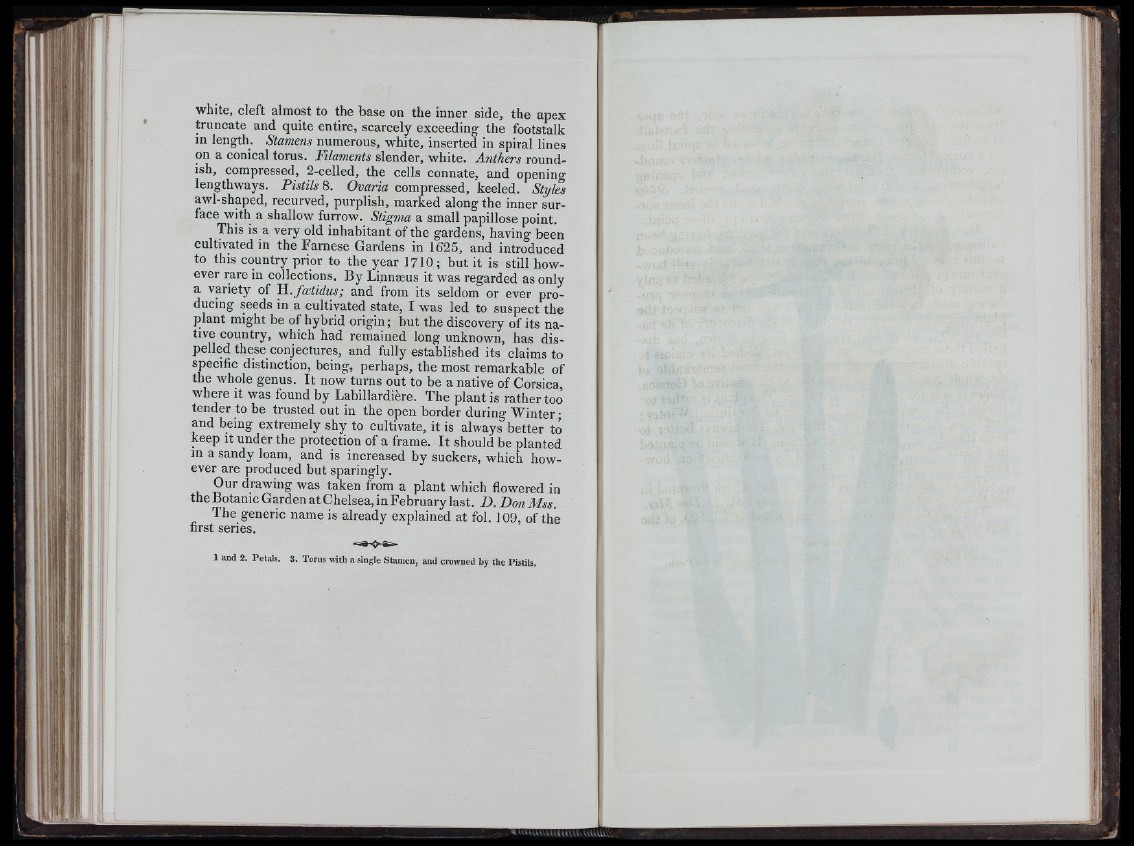
M
Wil
white, cleft almost to the base on the inner side, the apex
truncate and quite entire, scarcely exceeding the footstalk
in length. Stamens numerous, white, inserted in spiral lines
on a conical torus. Filaments slender, white. Anthers roundish,
compressed, 2-celled, the cells connate, and opening
lengthways. P istils 8. Ovaria compressed, keeled. Styles
awl-shaped, recurved, purplish, marked along the inner surface
with a shallow furrow. Stigma a small papillose point.
This is a very old inhabitant of the gardens, having been
cultivated in the Farnese Gardens in 1625, and introduced
to this country prior to the year 1710; but it is still however
rare in collections. By Linnæus it was regarded as only
a variety of H.fcetidus; and from its seldom or ever producing
seeds in a cultivated state, I was led to suspect the
plant might be of hybrid origin ; but the discovery of its native
country, which had remained long unknown, has dispelled
these conjectures, and fully established its claims to
specific distinction, being, perhaps, the most remarkable of
the whole genus. It now turns out to be a native of Corsica,
where it was found by Labillardière. The plant is rather too
tender to be trusted out in the open border during Winter ;
and being extremely shy to cultivate, it is always better to
keep It under the protection of a frame. It should be planted
in a sandy loam, and is increased by suckers, which however
are produced but sparingly.
Our drawing was taken from a plant which flowered in
the Botanic Garden at Chelsea, in February last. D . Bon Mss.
The generic name is already explained at fol. 109, of the
first series.
1 and 2. P e ta ls. 3. Torus with a single Stamen, and crowned by the Pistils.